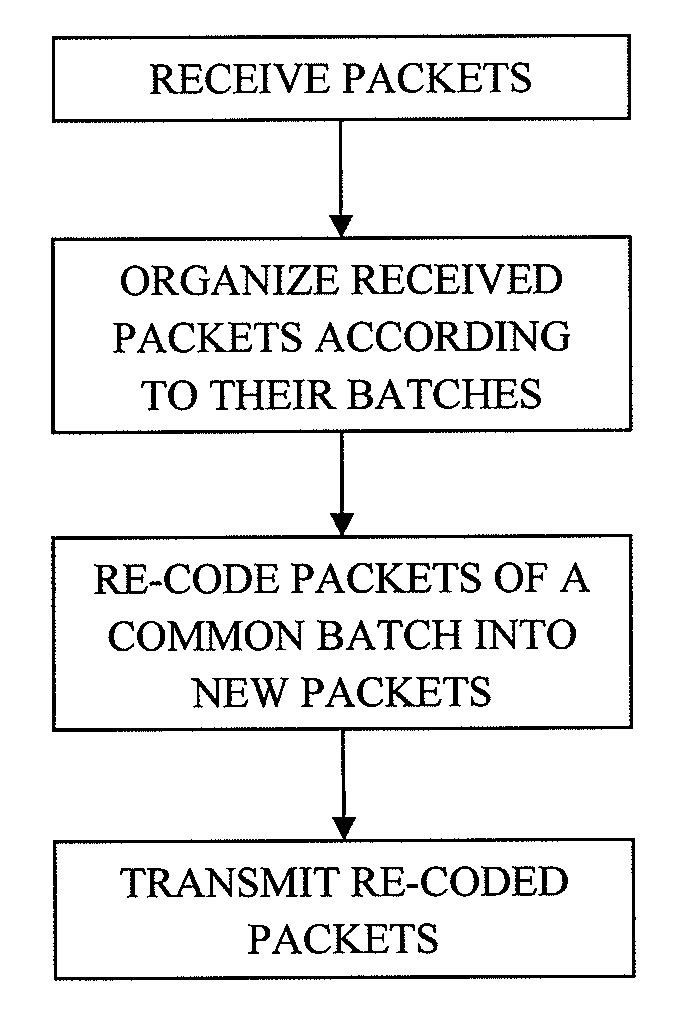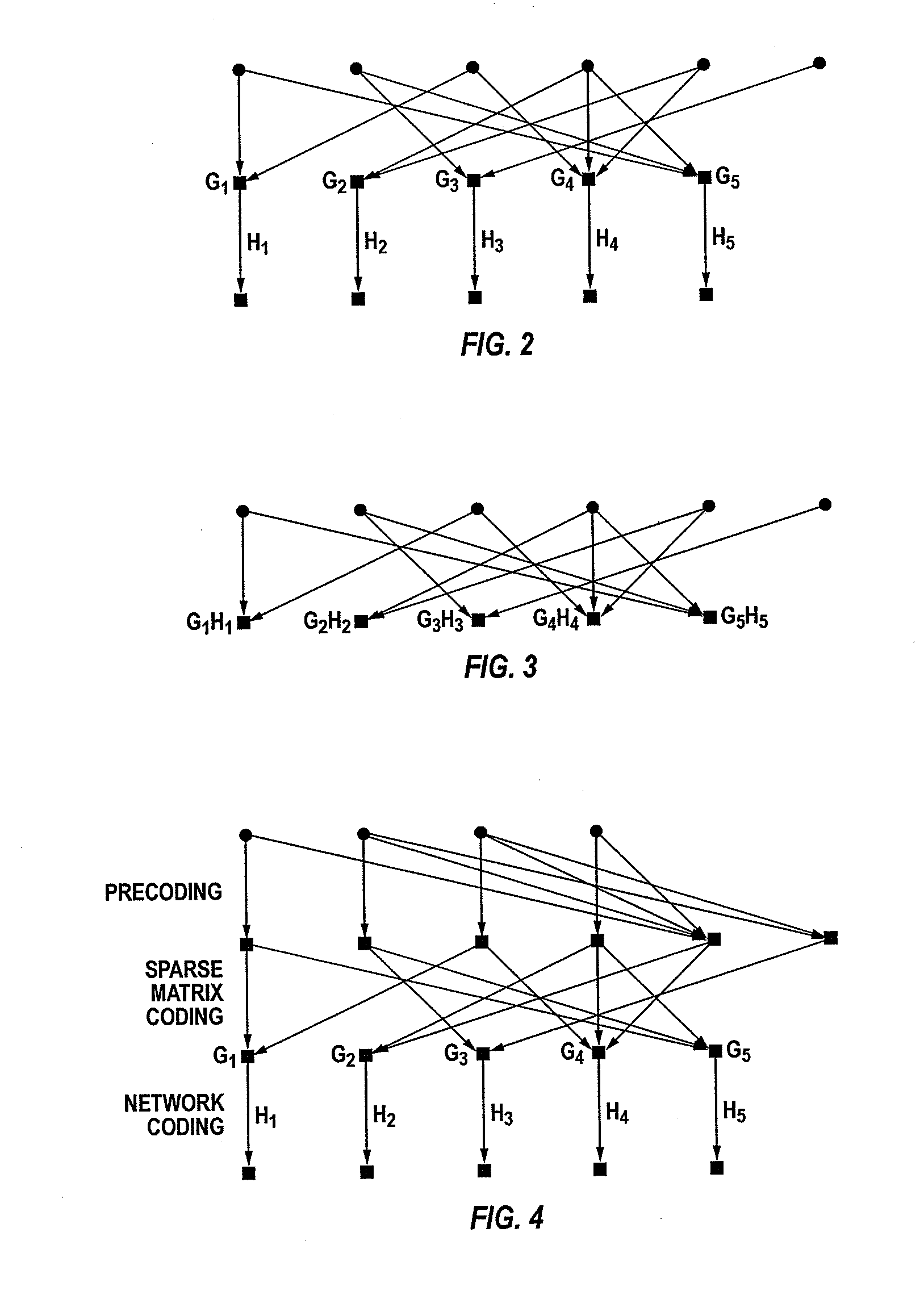Subset coding for communication systems
a communication system and subset technology, applied in the field of reliable communication, can solve the problems of low encoding/decoding complexity of schemes, unsatisfactory network links, and high complexity of encoding, recoding and decoding, and achieve the effect of simple transmission protocol
- Summary
- Abstract
- Description
- Claims
- Application Information
AI Technical Summary
Benefits of technology
Problems solved by technology
Method used
Image
Examples
Embodiment Construction
[0074]FIG. 1 is a block diagram showing elements of a communication system 10 employing the methodology according to the invention. A source node 12 comprises an encoder 14 coupled to a data source 16 that provides as input to the encoder 14 multiple large data files, for example large data file 18. The encoder 14 may include a precoder 20. In addition there is a sparse matrix coder 22. The output of the encoder 14 is coupled to a transmitter 26 which in turn is coupled to a link 28 over which batches 21, 23, 25 are transmitted. The link 28 is coupled to one or more intermediate nodes 30, 32, 34, typically within a mesh or cloud 36. The input to the encoder 14 is a sequence of source packets 15, 17, 19 corresponding to the large data file 18. The output of the encoder 14 to the transmitter 26 is a set of encoded output packets, herein autonomous batches 21, 23, 25. The transmitter 26 transmits these batches in a form that is suitable for the network. These batches are conveyed to th...
PUM
 Login to View More
Login to View More Abstract
Description
Claims
Application Information
 Login to View More
Login to View More - R&D
- Intellectual Property
- Life Sciences
- Materials
- Tech Scout
- Unparalleled Data Quality
- Higher Quality Content
- 60% Fewer Hallucinations
Browse by: Latest US Patents, China's latest patents, Technical Efficacy Thesaurus, Application Domain, Technology Topic, Popular Technical Reports.
© 2025 PatSnap. All rights reserved.Legal|Privacy policy|Modern Slavery Act Transparency Statement|Sitemap|About US| Contact US: help@patsnap.com



